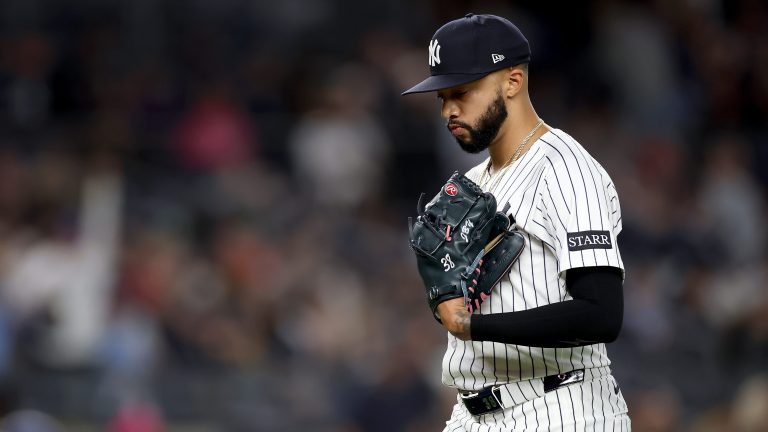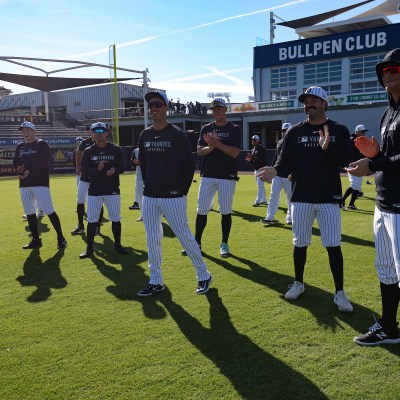Devin Williams Has Not Been What the Yankees Need Him to Be
2025 Devin Williams has been the least effective version of himself that we have ever seen. What's behind these struggles?

Devin Williams has been one of the best relief pitchers of the 2020s. Entering 2025, he had thrown 222 innings with 361 strikeouts, 68 saves, a 1.70 ERA, and a 0.98 WHIP. He was an incredible replacement for Josh Hader in Milwaukee.
As an impending free agent after the 2025 season, the Brewers opted to get some value for Williams by trading him to the Bronx. The New York Yankees parted with a rental of their own, starting pitcher Nestor Cortes, as well as young infielder Caleb Durbin, hoping to fortify their bullpen.
The Yankees found a viable closing option down the stretch last season in Luke Weaver. However, for much of the regular season, Clay Holmes was very inconsistent in the closer role. General manager Brian Cashman hoped that by acquiring Williams to be the closer and moving Weaver to a set-up role would give them a lights-out duo to finish off their opponents.
Weaver has been outstanding to start the 2025 season. Williams, not so much.
Williams was already overtaken (temporarily, at least) by Weaver as closer. In 11.2 innings thus far, Williams has surrendered 13 earned runs, walked 10 batters, and struck out 13. He earned four saves before being removed from the ninth-inning role. Somehow, he’s only been charged with two blown saves this year, too.
Let’s see what it could take for Williams to get back to his prior form as an All-Star caliber closer.
Devin Williams Has Always Been an Enigma
For many of the best closers in baseball, they’ve found their success by having a triple-digit fastball and/or a wipeout slider. Williams doesn’t fit this archetype.
Since 2023, Williams, 30, has had below-average velocity on his fastball among all pitchers. Compared to closers around the league, sitting 93-94 mph is among the slowest fastball velocities. In 2023-24, he still posted sub-two ERA seasons. This year, his ERA is 10.03.
Williams’ calling card has always been his “Airbender” changeup, which seems to move like a flying saucer as it approaches the batter.
Here’s a clip of the Airbender from this season, which still looks wicked at times amidst his struggles:
Usually pitchers that rely on changeups are more pitch-to-contact guys, but Williams’ has been so nasty that he could use it as his primary weapon for whiffs.
Something that has helped Williams be so successful throughout his career is that his extension towards home plate is consistently over seven feet. This allows his velocity to be perceived as faster than it actually is.
With some lengthy extension and a unique, wicked changeup, Williams has been a standout pitcher and thrived as a closer throughout his career. Is there hope for him to bounce back, or has something serious gone awry?
What’s Gone Wrong?
Devin Williams in 2025 has been the least effective version of himself that we have seen since his brief rookie audition in 2019.
| WILLIAMS’ STRUGGLES | 2025 | PREVIOUS CAREER WORST Since 2020 |
| FASTBALL VELO (mph) | 93.6 | 94.2 (2023) |
| CHANGEUP STUFF+ | 101 | 114 (2023) |
| K-BB% | 5.2% | 25.5% (2023) |
| CHASE% | 28.5% | 29.4% (2024) |
| WHIFF% | 26.3% | 40% (2024) |
| GB% | 39.4% | 43.2% (2024) |
| xFIP | 5.37 | 2.92 (2021) |
There are some concerning developments with Williams this season, as seen in the table above. The primary concern for me is the effectiveness of his bread and butter pitch, the changeup.
Williams’ changeup is now just above league average one, per Stuff+, which has still helped him keep lefties at bay to the tune of a .200/.414/.300 slash. Since the pitch is no longer as good as it once was thus far, right-handed hitters have begun lighting up Williams. They’ve slashed .346/.414/.423 so far this season.
Williams has consistently offered free passes at a high rate throughout his career, but he was always able to get strikeouts at such a ridiculous rate that he was able to be elite. However, this season his K rate is way down from what we are used to seeing.
Striking out 20.8% of batters wouldn’t even be particularly great for a starter, so as a reliever with a 15.1% walk rate, he simply has to miss more bats to be effective. Batters are swinging and missing less than they ever have against Williams, and it all comes back to the changeup being less effective.
Williams throws his changeup 52.8% of the time, so it isn’t being used to change the batter’s sight from anything. He throws it so much because it’s been outstanding throughout his career. If right-handed batters continue to hit it well this season, Williams will have to adjust or add a new pitch to try and recapture his dominance.
Why Williams Could Bounce Back
Relief pitchers are always dealing with small sample sizes, but let’s be real: we are digging deep into a little 11.2-inning sample. I mention this because it’s very possible that batted ball luck can play a big part in a sample this small.
What immediately jumps out to me is that Williams has not surrendered a home run yet. His average exit velocity and hard-hit rate against him are still in the top-20% of all pitchers. So, while Williams is still missing less bats and getting less ground balls than he ever has, he still isn’t surrendering too much hard contact.
Since his hard-hit rate is still in a good place, it’s worth bringing up that his current .382 BABIP is noticeably higher than what we have seen Williams sustain in his career. While we’d certainly prefer him to start missing bats at a clip better than 20%, some of these soft and medium-contact batted balls should find a glove a bit more often in the future than they have thus far.
For a high-leverage reliever, having a quality fastball is always important. Even though Williams’ fastball is below-average velocity, it still grades as a 107 Stuff+ offering, 7% better than a league average fastball.
He may need to lean on that a bit more, or perhaps incorporate a second fastball like a sinker or cutter. That could help him keep those righties more honest on his (seemingly regressing) changeup.
Another reason why I think Williams will probably be fine this season is less data-based and more arbitrary. This guy has held down the closer role for a few years on a good Brewers team, so he has been in plenty of high-leverage spots. He should have the mental fortitude to escape tough spots, even if his stuff could be starting to regress this season.
Forecasting Williams’ Future
Considering Williams is a free-agent at season’s end, this is a massive season for him to prove his value. It’s not off to an optimal start, and he has a teammate who has been good enough to unseat him as closer within a month.
Weaver, 31, has been outstanding in the Yankees bullpen for the past two seasons. He held down the ninth inning role throughout their World Series pursuit, while lacking any pedigree of a high-end closer.
Like Williams, Weaver is primarily a fastball-changeup pitcher, but he does mix in an occasional cutter or slider to keep his opponents honest.
Weaver’s fastball (101 Stuff+) and changeup (94) both grade out as inferior to Williams’ offerings. However, I think it cannot be overstated how beneficial it is that he is able to throw a second fastball and breaking ball to mess with right-handed hitters.
Weaver’s 3.82 xFIP indicates that he isn’t as dominant as his perfect start would lead you to believe. His 94-mph fastball isn’t typical of a closer either, so I have a feeling that this could develop into a committee of sort, especially if Williams is able to bump up his strikeouts.
Barring an implosion over the course of the entire season, Williams should still secure a multi-year deal in free agency for an 8th or 9th inning role.
Since his changeup doesn’t seem to be bulldozing every batter he faces anymore, it might be time for Williams to add a third offering if he wants that contract to be more lucrative.


